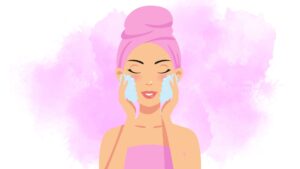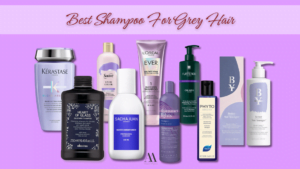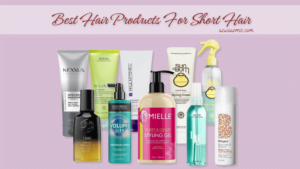
Has your hair been acting a bit strange lately? Does it feel like nothing seems to revive its shine or strength no matter what conditioner, hair mask, or treatment you use?
Trust me, I’ve been there. I remember those days when my hair, once my pride and joy, turned into a brittle, lifeless mess. It was a distressing time, and the confusing array of hair care products in the market didn’t help.
Then, one day, a friend mentioned something that changed my hair game: Protein.
Yes, the same nutrient that helps our muscles recover and grow has a pivotal role in restoring the health of our hair. I embarked on a journey to understand the role of protein in hair health and how to identify if your hair is crying out for some protein TLC.
In this blog post, I want to share what I’ve learned, so you can determine if your hair needs a protein boost and what you can do about it.
Understanding Hair Protein
Before we dive into the nitty-gritty of proteins found in hair, let’s take a moment to understand what protein actually does for our hair.
Picture your hair as a building. Protein, in this case, would be the bricks and mortar – it’s what gives your hair its structure and strength.
When it comes to types, there are several proteins that our hair loves. Keratin, collagen, and silk amino acids are just a few stars in this protein-packed show.
But, like everything in life, it’s about balance.
Yes, proteins are great, but too much of them without enough moisture can lead to rigidity and breakage.
And we don’t want that, do we?
So, stick with me, as we delve deeper into the role of protein in hair, the different types, and how to maintain that all-important balance between protein and moisture.
How To Know If Your Hair Needs Protein
So, how do you know when your hair is sending out SOS signals for some protein love?
Well, there are a few tell-tale signs that you should be on the lookout for.
- Dry and Brittle Hair: If your once luscious locks now feel more like straw, this could be a sign that your hair is lacking protein. Protein helps maintain the moisture balance in your hair. Without it, your hair may become dry and brittle.
- Excessive Breakage: Notice a lot of hair on your brush or pillow. This could be due to a lack of protein. Protein strengthens your hair and without it, hair becomes weak and prone to breakage.
- Lack of Elasticity: Healthy hair should be able to stretch without snapping. If your hair breaks easily when pulled or combed, it may be screaming for a protein treatment.
- High Porosity: High porosity hair absorbs moisture quickly but also loses it just as fast. This might mean your hair needs more protein to help control and maintain its moisture levels.
- Loss of Curl Pattern: For my curly-haired friends, if you notice your curls have lost their bounce or shape, it could be a cry for protein. Protein helps maintain the structure of your hair, which includes keeping those beautiful curls intact.
- Poor Response to Moisturizing Products: If your favorite moisturizing products aren’t working their usual magic, it might not be the product that’s the problem. Your hair could be lacking the protein it needs to respond effectively to these products.
Always remember, your hair is unique and it communicates in its own way. Paying attention to these signs will help you understand what it needs to stay healthy and vibrant.
So, next time you notice any of these signs, consider giving your hair a much-needed protein treatment.
How to Confirm Protein Deficiency
I’ve discovered some pretty interesting ways to determine whether your hair is crying out for more protein. Trust me, it’s not as complicated as it sounds!
You don’t need a lab coat or a fancy degree to decipher the signs.
In fact, there are some simple tests that you can do right at home to confirm if your hair is protein deficient. So grab your detective hat, and let’s get investigating!
- The Stretch Test: This is one of my personal favorites because it’s so easy to do. Take a strand of your hair (make sure it’s wet), and gently stretch it. If it snaps immediately, your hair might be in need of some protein love. Healthy hair should stretch up to 50% of its original length when wet!
- The Strand Test: Another test you can conduct in your very own bathroom. Simply run your fingers down a strand of your hair, from root to tip. If it feels rough or bumpy, this could be a sign that your hair cuticle is damaged and lacking protein.
- Professional Hair Analysis: Now, if you’re like me and love data, you might want to consider getting a professional hair analysis. They’ll be able to give you a detailed breakdown of your hair health, including protein levels.
Remember, these tests are merely tools to help you understand your hair better. If you suspect your hair is protein deficient, it might be a good idea to consult with a professional. After all, your hair is an extension of you, and it deserves the best care possible!
Types of Protein Treatments
Homemade treatments
Homemade treatments are affordable and easy to make using ingredients you probably already have in your pantry. They’re also great because you can customize them to your hair type and needs.
You can DIY your hair protein treatment at home using coconut milk, avocado, banana, or almond oil. These ingredients are rich in fatty acids and amino acids, which promote strong and healthy hair.
In addition, you can consume dairy-free protein bars which serve as an excellent source of protein for your hair.
Commercial treatments
Commercial treatments are convenient and have been formulated to provide a targeted treatment.
According to Dr. Olive, a dermatologist, there are five effective hair protein treatments you can try to restore the health of your hair.
These include keratin treatments, which smooth and strengthen the hair shaft, and collagen treatments, which add shine and elasticity to your hair. Other popular options include protein-infused conditioners and masks that you can incorporate into your regular hair care routine.
Balancing Protein and Moisture
When it comes to maintaining healthy hair, the right balance of protein and moisture is crucial. And we’re not just talking about the food you eat — your hair needs protein too!
But how do you know if your hair needs more protein or more moisture?
This is where a balanced hair care routine comes in. By creating a regimen that suits your hair’s needs, you can ensure that you’re giving your tresses exactly what they need to stay healthy and strong.
It’s important to note that too much protein can actually be damaging to your hair, so it’s all about finding the right balance.
Incorporating protein treatments into your routine can help strengthen your strands, but be careful not to overdo it. Your hair will thank you for finding that perfect protein-moisture balance.
Preventing Over-Proteinization
Signs of excess protein in hair
- Change in Texture: One of the first signs of protein overload is a noticeable change in the texture of your hair. It may feel straw-like and stiff, losing its natural softness and flexibility.
- Split Ends: Too much protein can lead to an increase in split ends. This is due to the hair becoming brittle and prone to breakage.
- Limp Strands: Hair that has too much protein might lose its volume and appear limp or lifeless.
- Increased Shedding: If you notice that your hair is shedding more than usual, it could be a sign of protein overload.
- Dryness: A common symptom of protein buildup is unusual dryness. Despite regular hydration, your hair might still feel dry if there’s excess protein.
- Greasy Feeling: According to dermatologist Dr. Cory Gaskins, your hair might feel greasy if it’s experiencing a protein overload.
- Brittleness: Hair that snaps off easily is another common sign of protein overload. The hair becomes brittle due to the lack of moisture balance.
Remember, it’s all about balance. Too much protein can lead to these issues, but without enough protein, your hair can become weak and lack structure. It’s important to find the right balance for your specific hair type and needs.
How to correct protein overload
First things first, don’t panic. It’s a common issue and there are plenty of ways to fix it.
- Moisture, Moisture, Moisture: If your hair has too much protein, it’s likely craving moisture. Start by using a deep conditioning treatment or a hair mask that is rich in moisturizing ingredients like shea butter, aloe vera, or honey. This will help to restore the balance between protein and moisture in your hair.
- Switch Your Products: Check the labels on your hair products. If they’re high in protein, consider swapping them out for something more hydrating. Look for products that are free of proteins or have them listed towards the end of the ingredient list.
- Clarifying Shampoo: Using a clarifying shampoo can help to remove the excess protein from your hair. But remember, these shampoos can be quite drying, so follow up with a good conditioner.
- Take a Protein Break: Give your hair a break from protein treatments for a while. This will allow your hair to regain its natural balance.
- Balanced Diet: Eating a balanced diet can also help to correct protein overload in the hair. Make sure you’re getting enough vitamins and minerals, as these are just as important for hair health.
- Patience is Key: It might take some time for your hair to recover from protein overload. Be patient and gentle with your hair during this time.
Remember, everyone’s hair is different, so what works for one person might not work for another. It’s all about finding what works best for your hair.
Conclusion
In wrapping up, recognizing the signs of protein deficiency in your hair is a crucial step in your hair care journey.
From brittle strands to increased breakage and loss of elasticity, these can all signal that your hair could use a protein boost.
But remember, balance is key. Too much of a good thing can quickly turn bad, leading to protein overload.
Always keep in mind these hair tips when considering protein treatments. If you’re ever unsure, consulting with a hair professional can provide further guidance.
After all, understanding your hair’s needs and providing it with balanced care is the cornerstone of healthy, resilient hair. Armed with this knowledge, you’re one step closer to achieving your ultimate hair goals.





